Just outside Wendover, two railway viaducts are being built for the HS2 railway, and they’re the first of their kind in the UK.
The first of the two is the Wendover Dean Viaduct, which will span a valley just to the south of Wendover and sits next to a second viaduct, the Small Dean Viaduct, which will carry the HS2 railway across a busy road and an existing railway.
What makes the viaducts unique in the UK is that it’s a composite structure, using steel for the long spans instead of concrete. This is a proven design used for other high-speed railways in Europe, but it’s the first time it has been used on this scale in the UK.
The main advantage is that it considerably reduces the embedded CO2 in the structure by about a third, but arguably, it also delivers a nicer looking viaduct with the mix of pale concrete and a strip of weathering steel which will darken over the years.
Ahead of that, the viaduct needs to be assembled, and that’s happening at the moment on a long but quite narrow site just outside Wendover by EKFB, a joint venture of Eiffage, Kier, Ferrovial Construction and BAM Nuttall.
Piles have been drilled down into the ground to support the viaduct piers – and deeper than initially expected after some local geology issues were discovered. Then, a large cap was poured on top to create the slab that the viaduct piers will sit on.
On top, the wire cages that will sit inside the piers are being built by hand before being clad in pre-cast shells. The piers range from a few meters, to 18 metres in height, and have what’s called the “hammerhead” sitting on top to hold the railway.
The hammerhead shell is built in Northern Ireland and delivered to the site, ready to receive a steel cage that has also been built by hand on site. It takes a team of workers just over a week to assemble each cage, a reminder that for all the automation that is possible, some things still have to be built manually.
Sitting on a small hill overlooking this busy building site is the first of the steel beams that will soon carry the railway across the valley.
These steel beams are fabricated by Eiffage Metal at a specialist facility in France and sent over by ferry to the UK. The beams are pushing the limits of what can be delivered by a lorry and are so long that delivery is even affected by the height of the tides to get the lorries on and off the ferry ramps.
Delivered to site overnight when they can arrange long-load lorry movements, the beams are welded together on site, and later will be pulled across the valley to sit on top of the piers. The beams are so long that they will bend under their own weight as they are pulled out over the gap, so a large “concorde nose” sits on the front for the beam to push up against the pier it’s being pulled over to.
Once assembled, the railway deck, side walls and some decorative ears will be added to complete the viaduct. When completed, the 450-metre long viaduct will have ten spans supported on nine piers.
It’s a large if simple sounding project, but it’s not without its difficulties, from the narrow construction site to work on to weather problems affecting the works. Heavy rain prevented earth works being carried out recently and will likely have to stop for the winter months, and on our visit, it was very windy on the exposed hillside which will affect crane operations.
The land they are working on belonged to a local farmer, and just as they were about to demolish an old barn to make space for the viaduct, some bats decided to move in. They’ve now had to build a replacement bat home nearby, and specialists have been brought in to encourage the bats to move.
Once the viaduct is finished, the land will be cleared and returned to the farm, and a couple of footpaths will be reopened so people can get up close to the sleek spans carrying HS2 trains above their heads.
However, far more people will get much closer to the neighbouring viaduct, the Small Dean viaduct, as it will pass right over one of the busiest roads in the area, the A413 which links the towns in a line through the Chilterns. It also passes over the Chiltern mainline railway, which runs alongside the road, which makes for a very tricky building site.
Incidentally, it’s not called the Small Dean Viaduct because it’s smaller than the Wendover Dean Viaduct, although it is, but because it passes over a small farm road called Small Dean Lane.
Getting between the two sites requires a short drive along the road, passing underneath a large conveyor belt, which carries excavated soil from the Wendover Dean site to the Little Dean site. It’s not needed for the viaducts but is needed a few miles away for road embankments near Aylesbury. So it’s piled up here, waiting until the HS2 sites join up and can transport it northwards without using the local roads.
Just like its bigger brother, the Little Dean viaduct also uses weathering steel in its structure and has vertical fins to provide additional strength and to improve the appearance of the span as it passes over the main road.
However, this is an exceptionally difficult site to work in, as the piers need to be built in two island sites between the road and the railway. Sheet piles have been pushed down into the ground next to the western side of the railway to stabilise it while piles are drilled down to support a pier that will sit there. On the eastern side of the railway, two more piers will be installed in a small patch of land between it and the busy road.
Awkwardly, one of the piers needs to go where the road is — so the road is to be swerved slightly to one side to allow the pier to be installed.
They could use longer spans by constructing a long bridge, but that would require a much taller structure, so while a viaduct is more effort to build, it has a lower visual impact. When completed, the Little Dean viaduct will be 350 metres long, with six piers supporting seven spans, and one of those spans will be a lengthy 55 metres.
One of the project’s many difficulties is that once they’ve built all the piers, they need to slide the steel viaduct onto them, which means working above a live railway and a busy road.
Closing the road for a weekend recently was very unpopular, as it closed the main north-south road in this part of the country, so the contractors are working on whether it’s possible to pull the viaduct over the road while it’s in use. They’re less worried about things falling off their railway bridge than drivers being distracted by what’s happening and crashing.
There will be a railway closure though – as you are not allowed to build above a live railway. The dates aren’t confirmed yet, but the viaduct launch across the road and railway is expected to be around Easter 2025. It’ll also be a complicated move because the viaduct slightly curves, which will add to the headaches.
One of the reasons this area has been chosen for the HS2 line is the same one that sees a busy road, an existing railway and a long line of towns is that it forms a long natural depression through the hilly Chilterns created by melt water from the last ice-age. That convenient alignment also means there are quite a lot of utilities in the area as well, all of which need moving if they affect the HS2 railway.
With new embankments being created in places, they’ve also had to dig some additional drainage tunnels for the water that runs off the hills, and some of those new drainage culvert tunnels are pretty large.
There was also a problem with a protest camp where two piers are being built, which caused some delays. Whatever the campaign’s merits, trying to stop an electric railway being built on environmental grounds while camping next to one of the busiest petrol fumed roads in the Chilterns always seemed a bit odd.
When all is completed, the realigned A413 road will include some passive provision for dual carriageway expansion in the future, if the council wants it — but will also for the first time include a full cycle lane.
As the sweeping viaduct passes over the road, being on a bike will probably be the best way to appreciate it.
For all their complexity, the two viaducts are just a small part of EKFB’s North Chilterns Area project, which includes 1.4km of cut-and-cover tunnel outside Wendover, eight overbridges, two underbridges, several road realignments and 11 new drainage tunnels.
—
Updated: 11am to note both viaducts are composite structures.

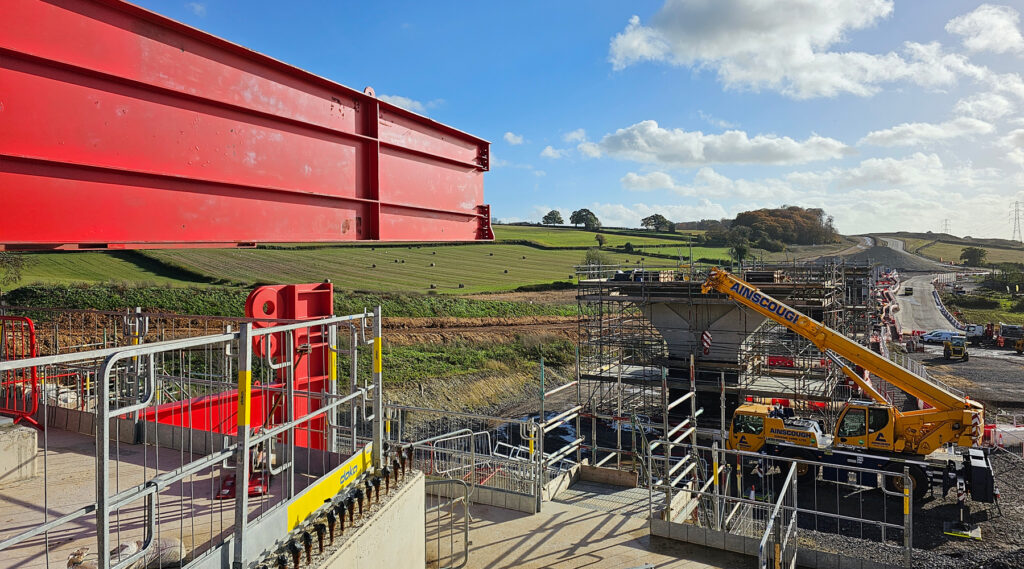
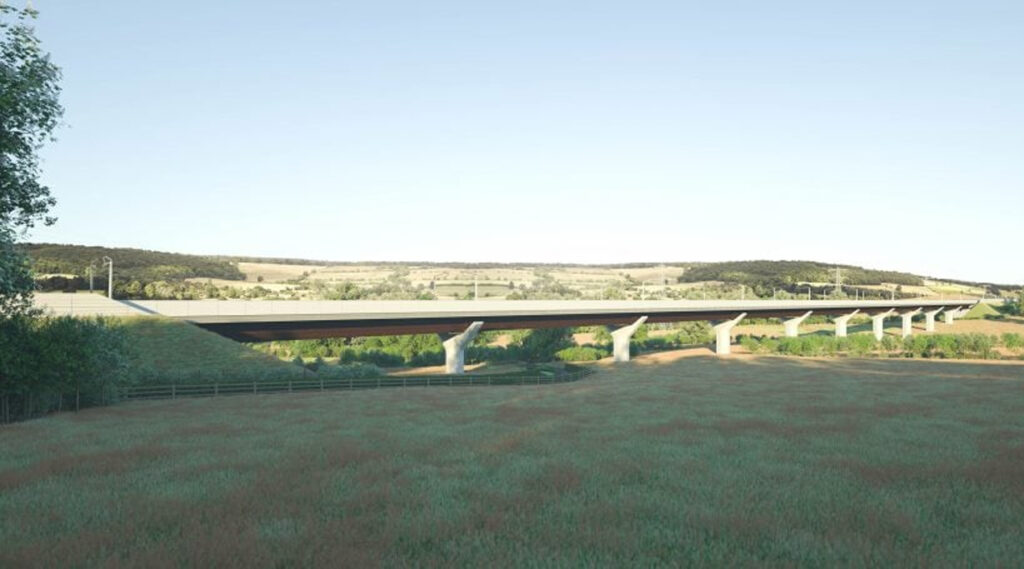
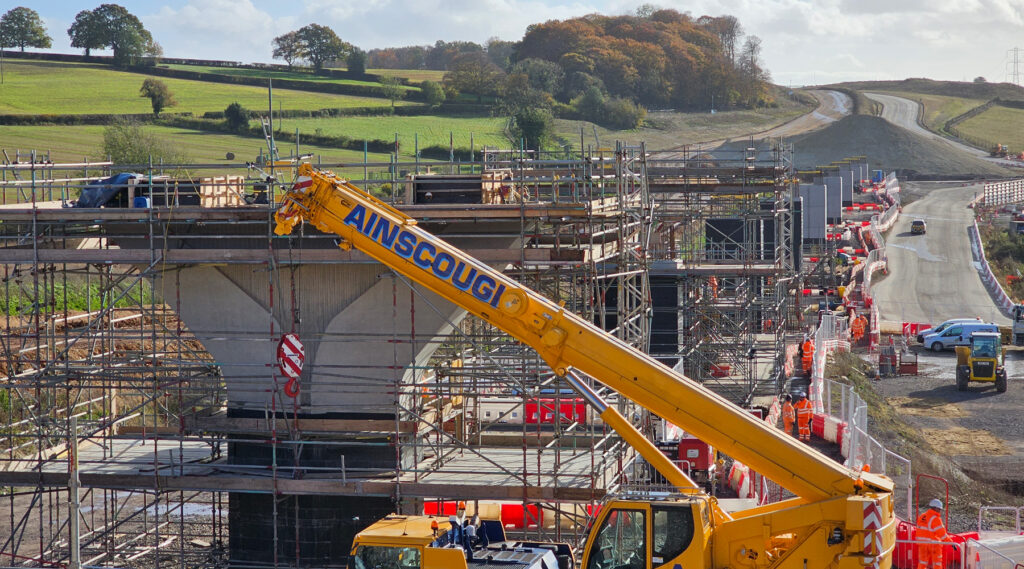
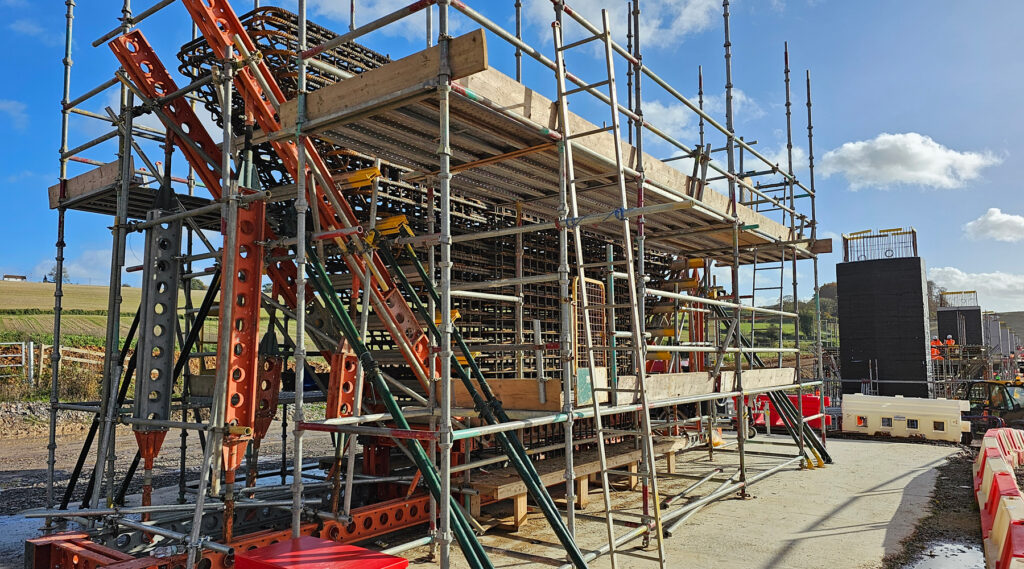
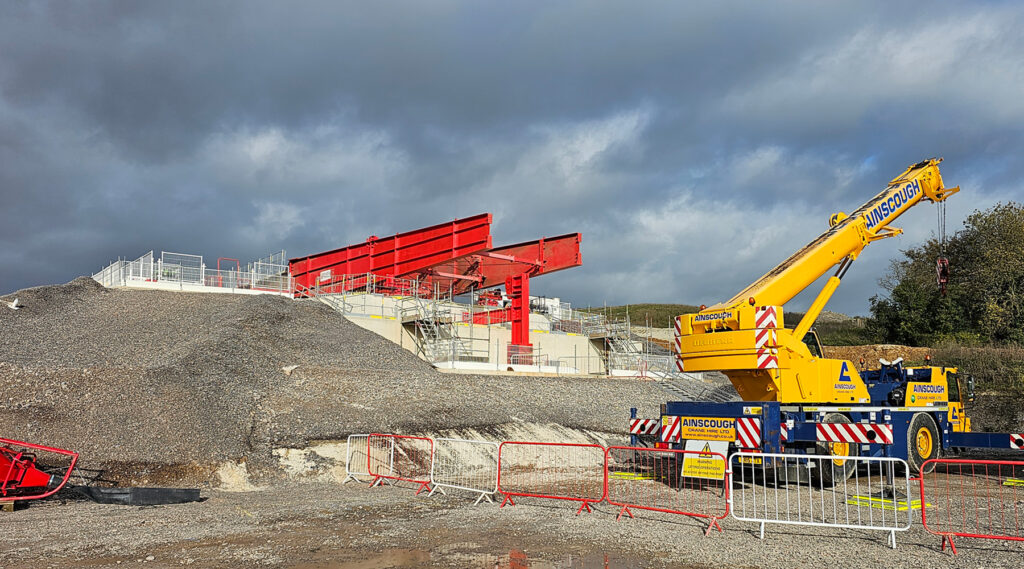
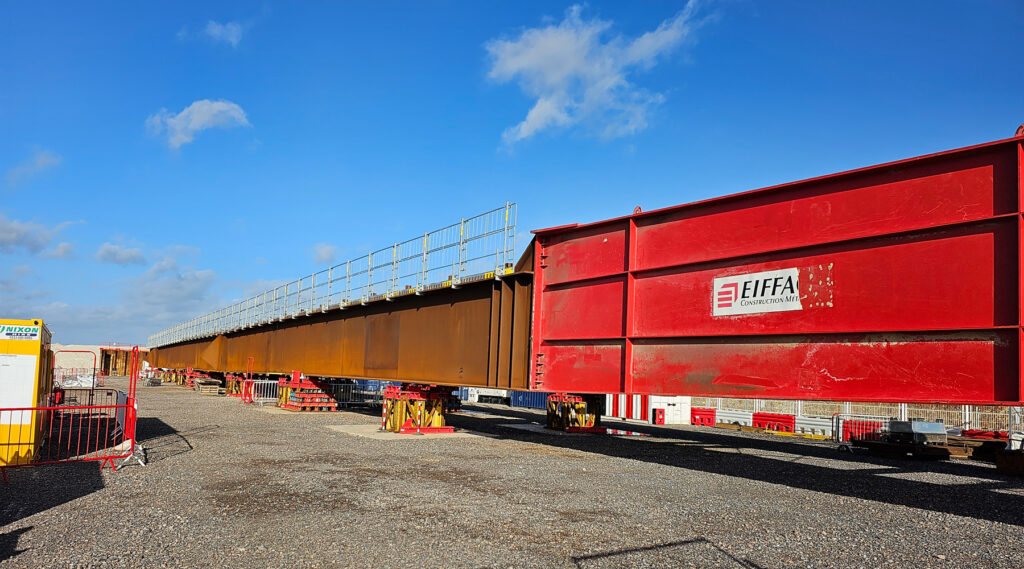
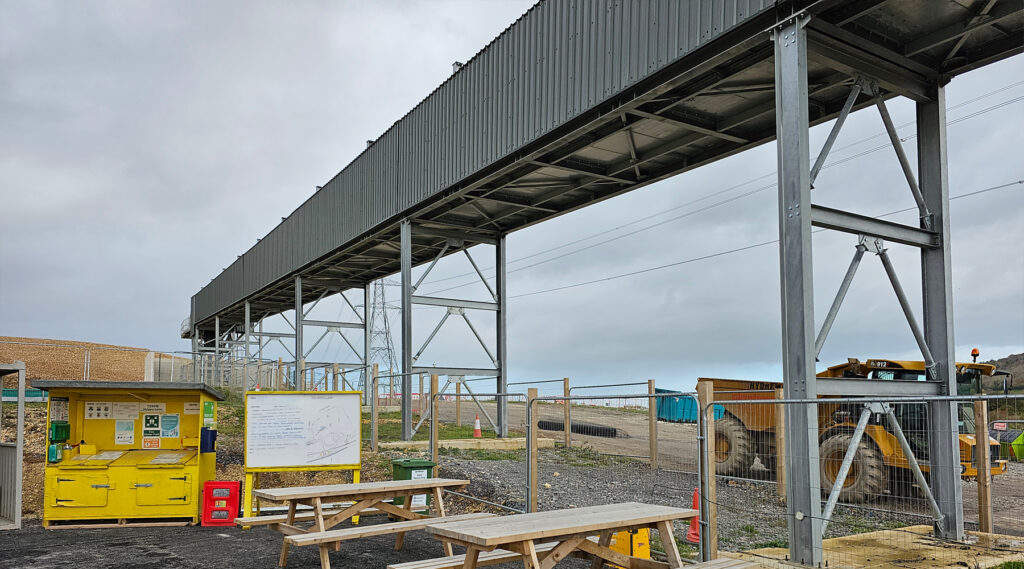
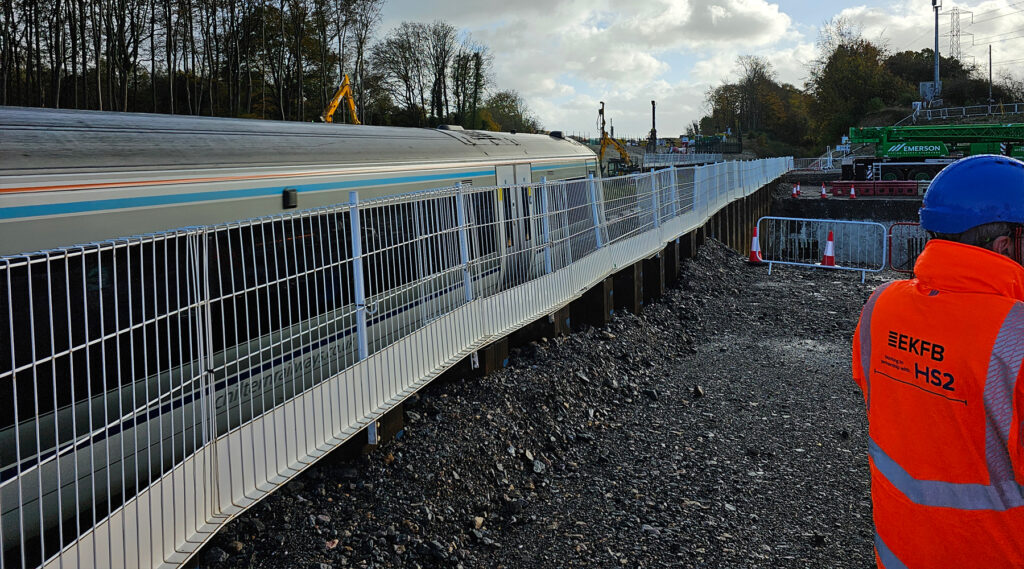
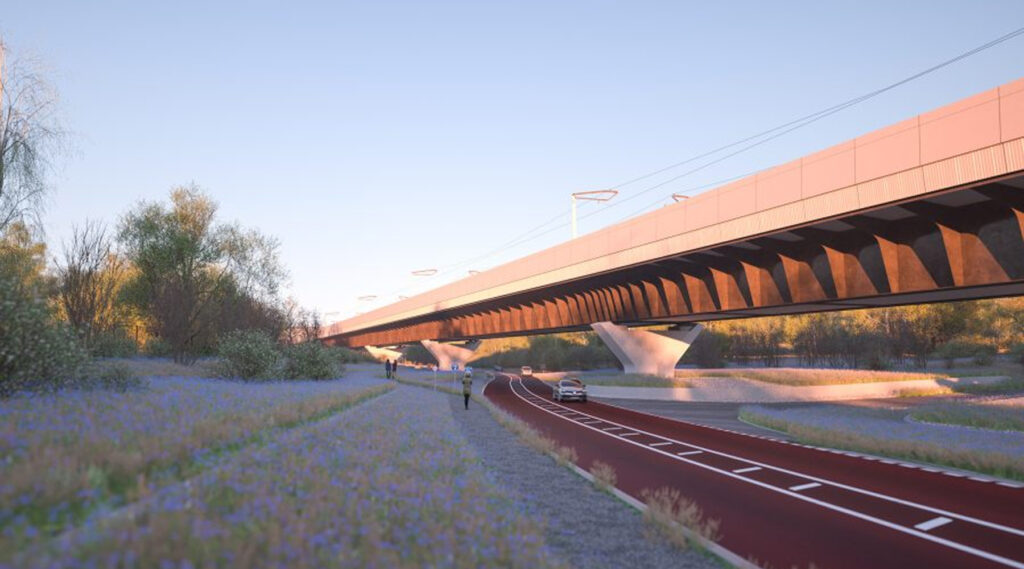






Very interesting and well described, thank you. I think this shows why HS2 has blown the budget, it is not just levelling out some ground and laying tracks but having to build many challenging structures like these which are major infrastructure works in their own right.
That is an absolutely horrible looking structure. They might as well have just built an embankment and sit the tracks on it. This just seems yet another example of the rampant over-engineering seen on this project.
I am sure locals will be delighted to have roads and paths blocked by a solid embankment when a viaduct would have let them pass through unimpeded.
Great photos and a write-up as ever, Ian.
Throughout this process, I think it is noteworthy that once HS2 actually has shovels in the ground, construction has been innovative and showcases British engineering at their best. Cost overruns have been largely due to our broken planning situation, NIMBYism forcing expensive mitigation efforts (much of the Chiltern Tunnel for example) that our European friends simply don’t have to be bothered about.
Nevertheless, what is being built is being done to a high-standard and – truncated as it is – will be for the benefit of the country for decades to come.
Steelwork from France though!
From an engineering prespective it is fascinating to see the huge amount of work that could have been avoided if HS2 had considered continuing the tunnel under the valley floor. Subsequent documents have revealed that despite the work carried out by CRAG (Chiltern Ridge Action Group), the tunnel option was never properly evaluated or costed. We all pay the price.
The full tunnel option was barely pushed for because the people who should have pushed for it put all their efforts into lobbying for the ‘no build’ option until way too late.
Ian, can you do some more of these interesting articles on HS2 construction, such as whats going on at Burton Green Tunnel near Kenilworth.
Wrong route London to Birmingham (should have used the existing rail route through North Acton, then paralleled the M40 to the outskirts of Birmingham); wrong point of departure for total project (should have started from Leeds); wrong estimates (well, they always are); wrong reason for creating it in the first place (a vanity project). Even the current PM is slamming it, despite the fact he had plenty of opportunity to call it in when Chancellor.